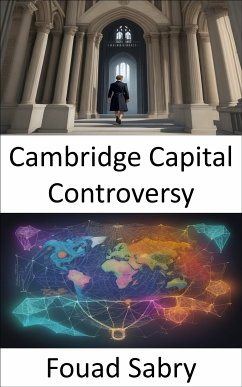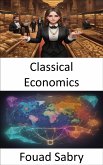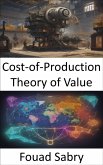What is Cambridge Capital Controversy
In economics, the Cambridge capital controversy, sometimes known as "the capital controversy" or "the two Cambridges debate," was a dispute that began in the 1950s and continued far into the 1960s. It was a disagreement between proponents of two different theoretical and mathematical perspectives in economics. The nature and function of capital goods, as well as a critique of the neoclassical perspective on aggregate output and distribution, were the topics of discussion during the debate. A significant portion of the debate took place between economists such as Joan Robinson and Piero Sraffa at the University of Cambridge in England and economists such as Paul Samuelson and Robert Solow at the Massachusetts Institute of Technology in Cambridge, Massachusetts, United States. The name of the controversy originates from the location of the principals who were involved in the controversy.
How you will benefit
(I) Insights, and validations about the following topics:
Chapter 1: Cambridge capital controversy
Chapter 2: David Ricardo
Chapter 3: Factors of production
Chapter 4: Macroeconomics
Chapter 5: Neoclassical economics
Chapter 6: Piero Sraffa
Chapter 7: Nicholas Kaldor
Chapter 8: Classical economics
Chapter 9: Production function
Chapter 10: Solow-Swan model
Chapter 11: Harrod-Domar model
Chapter 12: Heterodox economics
Chapter 13: Economic problem
Chapter 14: Long run and short run
Chapter 15: Evsey Domar
Chapter 16: Nobuo Okishio
Chapter 17: Neoclassical synthesis
Chapter 18: New classical macroeconomics
Chapter 19: Luigi Pasinetti
Chapter 20: History of macroeconomic thought
Chapter 21: Anwar Shaikh (economist)
(II) Answering the public top questions about cambridge capital controversy.
(III) Real world examples for the usage of cambridge capital controversy in many fields.
Who this book is for
Professionals, undergraduate and graduate students, enthusiasts, hobbyists, and those who want to go beyond basic knowledge or information for any kind of Cambridge Capital Controversy.
In economics, the Cambridge capital controversy, sometimes known as "the capital controversy" or "the two Cambridges debate," was a dispute that began in the 1950s and continued far into the 1960s. It was a disagreement between proponents of two different theoretical and mathematical perspectives in economics. The nature and function of capital goods, as well as a critique of the neoclassical perspective on aggregate output and distribution, were the topics of discussion during the debate. A significant portion of the debate took place between economists such as Joan Robinson and Piero Sraffa at the University of Cambridge in England and economists such as Paul Samuelson and Robert Solow at the Massachusetts Institute of Technology in Cambridge, Massachusetts, United States. The name of the controversy originates from the location of the principals who were involved in the controversy.
How you will benefit
(I) Insights, and validations about the following topics:
Chapter 1: Cambridge capital controversy
Chapter 2: David Ricardo
Chapter 3: Factors of production
Chapter 4: Macroeconomics
Chapter 5: Neoclassical economics
Chapter 6: Piero Sraffa
Chapter 7: Nicholas Kaldor
Chapter 8: Classical economics
Chapter 9: Production function
Chapter 10: Solow-Swan model
Chapter 11: Harrod-Domar model
Chapter 12: Heterodox economics
Chapter 13: Economic problem
Chapter 14: Long run and short run
Chapter 15: Evsey Domar
Chapter 16: Nobuo Okishio
Chapter 17: Neoclassical synthesis
Chapter 18: New classical macroeconomics
Chapter 19: Luigi Pasinetti
Chapter 20: History of macroeconomic thought
Chapter 21: Anwar Shaikh (economist)
(II) Answering the public top questions about cambridge capital controversy.
(III) Real world examples for the usage of cambridge capital controversy in many fields.
Who this book is for
Professionals, undergraduate and graduate students, enthusiasts, hobbyists, and those who want to go beyond basic knowledge or information for any kind of Cambridge Capital Controversy.
Dieser Download kann aus rechtlichen Gründen nur mit Rechnungsadresse in A, B, BG, CY, CZ, D, DK, EW, E, FIN, F, GR, H, IRL, I, LT, L, LR, M, NL, PL, P, R, S, SLO, SK ausgeliefert werden.









